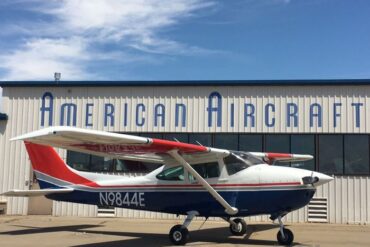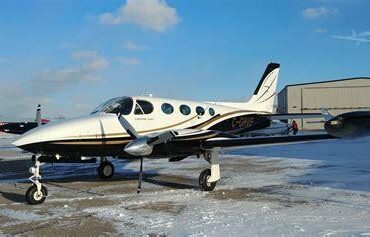The Cessna T206H is an exceptional aircraft that has gained a solid reputation among aviation enthusiasts and professionals alike. This high-performance single-engine airplane offers an unparalleled combination of versatility, reliability, and comfort. In this article, we will explore the price of the Cessna T206H, its operating costs, and various factors influencing these expenses, ensuring that potential buyers and owners can make informed decisions.
Overview of the Cessna T206H
The Cessna T206H is part of the Stationair series, a line of utility aircraft that has been in production for decades. Renowned for its rugged design and excellent performance, the T206H boasts a max takeoff weight of approximately 3,600 pounds and can carry a useful load of around 1,200 pounds. The aircraft is equipped with a Lycoming IO-540-U4A5 engine, providing a maximum cruise speed of around 145 knots and a range of approximately 800 nautical miles. Its spacious cabin comfortably seats up to six people, making it ideal for both personal and commercial use.
Pricing of the Cessna T206H
When considering the acquisition of a Cessna T206H, potential buyers must evaluate various factors that influence the price. Here is a detailed breakdown:
1. Purchase Price
The purchase price of a new Cessna T206H typically ranges from $500,000 to $600,000, depending on the chosen options and specifications. This price reflects the aircraft’s advanced technology, performance capabilities, and high-quality construction. For those interested in pre-owned models, the price can vary significantly based on year, condition, total flight hours, and modifications. A used T206H can be found for anywhere between $200,000 and $450,000.
2. Financing Options
Many buyers opt for financing to manage the initial purchase cost. Various lending institutions offer financing options for aircraft purchases, typically ranging from 10 to 20% down payment and loan terms of 10 to 20 years. Potential buyers should carefully assess their financial situation and explore different lending options to find the best fit for their needs.
3. Insurance Costs
Insurance is a critical component of owning any aircraft. The cost of insuring a Cessna T206H can range from $1,500 to $4,000 annually, depending on factors such as the owner’s flying experience, the aircraft’s value, and the type of coverage selected. Owners should obtain multiple quotes from various insurance providers to ensure competitive rates.
Operating Costs of the Cessna T206H
Understanding the operating costs associated with the Cessna T206H is essential for prospective owners. These costs can be divided into several categories:
1. Fuel Costs
Fuel is one of the most significant operating expenses for any aircraft. The Cessna T206H consumes approximately 14 to 16 gallons per hour of aviation gasoline (Avgas). At an average fuel price of $5 to $7 per gallon, the fuel cost can range from $70 to $112 per hour of flight time. Considering the average annual flight hours for general aviation is around 200 hours, the total annual fuel expense can be estimated at $14,000 to $22,400.
2. Maintenance Costs
Regular maintenance is crucial for ensuring the safety and reliability of the Cessna T206H. The maintenance costs can vary based on the aircraft’s age, usage, and specific maintenance needs. On average, owners can expect to pay around $3,000 to $5,000 annually for routine maintenance. This includes annual inspections, oil changes, and any necessary repairs or component replacements. As the aircraft ages, maintenance costs may increase due to the need for more extensive repairs or replacements.
3. Hangar or Tie-Down Fees
Securing a suitable location to store the aircraft is vital for protection against the elements. Hangar fees can vary significantly based on location and facility type. On average, hangar fees range from $300 to $800 per month, resulting in an annual cost of $3,600 to $9,600. For those opting for outdoor tie-downs, fees are generally lower, averaging around $100 to $300 per month.
4. Engine Overhaul Costs
The engine is one of the most critical components of the Cessna T206H, and planning for future engine overhauls is essential. The Lycoming IO-540 engine typically requires an overhaul after 1,500 to 2,000 flight hours, with costs ranging from $25,000 to $40,000. Owners should budget for this expense to avoid unexpected financial strain.
5. Miscellaneous Operating Costs
Several additional operating costs must also be considered:
-
Pilot Training: New owners may need to invest in pilot training or recurrent training, averaging $1,000 to $5,000.
-
Navigation and Communication Equipment: Upgrading avionics can range from $5,000 to $30,000, depending on the selected systems.
-
Miscellaneous Supplies: Costs for items such as charts, fuel lube, and cleaning supplies can add an additional $500 to $1,000 annually.
Total Cost of Ownership
To provide a clearer understanding of the total cost of ownership for the Cessna T206H, we can summarize the estimated annual operating costs in the following table:
| Cost Category | Annual Estimate |
|---|---|
| Fuel Costs | $14,000 – $22,400 |
| Maintenance Costs | $3,000 – $5,000 |
| Hangar Fees | $3,600 – $9,600 |
| Engine Overhaul (annualized) | $1,250 – $2,500 |
| Pilot Training | $1,000 – $5,000 |
| Miscellaneous Supplies | $500 – $1,000 |
| Total Annual Operating Costs | $24,350 – $45,500 |
Factors Influencing Operating Costs
While the above figures provide a general estimate of operating costs, several factors can significantly influence these expenses:
1. Flight Hours
The more frequently an aircraft is flown, the higher the operating costs will be. Owners who fly less may experience lower fuel and maintenance costs, but they must still account for fixed costs such as hangar fees and insurance.
2. Location
Geographic location plays a crucial role in determining operating costs. Areas with higher fuel prices, maintenance fees, and hangar rates will result in increased overall expenses. Owners in remote areas may also face additional costs for transporting parts or accessing specialized maintenance services.
3. Usage Type
The type of flying performed can impact operating costs. For example, if the aircraft is primarily used for commercial purposes, the frequency of flights and associated wear and tear may result in higher maintenance costs compared to recreational flying.
4. Modifications and Upgrades
Owners who choose to install additional equipment or make modifications to their Cessna T206H may incur additional costs, both during installation and through increased maintenance requirements.
Conclusion
The Cessna T206H is a remarkable aircraft that offers outstanding performance and versatility, making it a popular choice for both personal and commercial aviation. Understanding the purchase price and operating costs is essential for potential buyers and owners. By carefully evaluating these expenses and considering the various factors that influence them, individuals can make informed decisions that align with their aviation goals and budget. With proper planning and management, owning a Cessna T206H can be a rewarding and enjoyable experience for years to come.


















